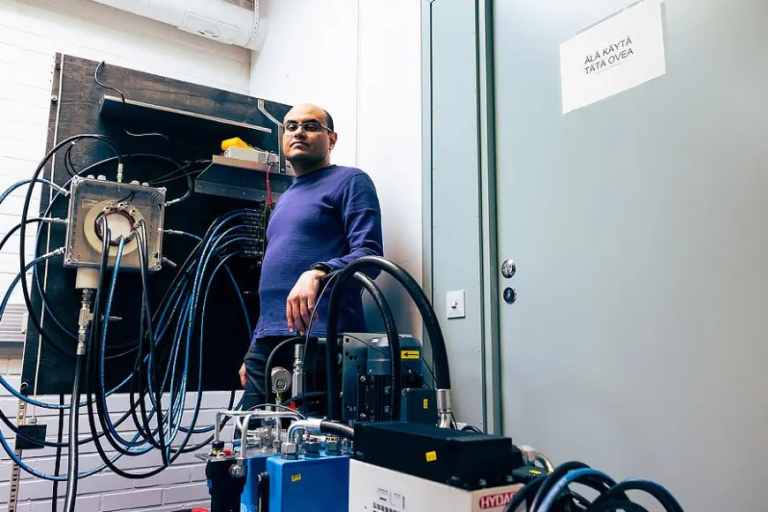Yliopisto toteuttaa tutkimuksen ulkoisen arvioinnin (RAE) vuonna 2022. Arvioinnin tuella yliopisto tulee kehittämään tutkimusta ja tutkimusedellytyksiä. Tiedeneuvosto on keskustellut tutkimuksen arvioinnin järjestämisestä kokouksessaan 8.2.2021. Tutkimuksen varadekaani Hamari kertoi tiedeneuvoston käymästä keskustelusta.
Tiedeneuvostolle on esitetty, että arvioinnin yksikköinä toimisivat tiedekuntien yksiköt. Ehdotukseen suhtauduttiin positiivisesti, mutta keskustelussa tiedeneuvostossa kiinnitettiin kuitenkin huomiota yksikköjen sisäiseen moninaisuuteen ja siihen, että monia yksikköjä ei ole helppoa sijoittaa mihinkään kolmesta arviointipaneelista tekniikka, terveys ja yhteiskunta. Neuvosto pitää tärkeänä, että arviointipaneelien kokoonpano tullaan rakentamaan hyvin huolellisesti.
Platform/tutkimusalusta haut edistyvät. Konsistori on päättänyt kokouksessaan 19.1. tutkimusalustojen valinnan kriteereistä. Kriteerit ovat tutkimusalustan tieteellinen taso, uutuusarvo sekä sen toiminnan tuoma lisäarvo, tutkimusalustan yhteensopivuus yliopiston strategian kanssa, tutkimusalustan substanssialueen yhteiskunnallinen merkittävyys, tutkimusalustan vaikuttavuus sekä tutkimusalustan toimeenpano. Tiedeneuvoston asettama työryhmä on käynnistänyt tutkimusalustojen hakuprosessin, aukeaa ilmeisesti ensi viikolla. Tavoitteena on, että ensimmäiset tutkimusalustat käynnistyvät alkusyksystä.
Sitten siirryimme aikaa vievempään aiheeseen tiedekunnan tutkimuslinjausten ensimmäiseen käsittelyyn. Hamari, Belliard, Vuorinen, Iltanen ja Aalto ovat tehneet tutkimusstrategian luonnosteluun liittyvät kalvot, jossa on vision luonnoksien alkuja. Aihe herätti runsaasti keskustelua. Jatkamme aiheesta perjantaina, siihen mennessä kaikki, erityisesti yksiköiden päälliköt, voivat miettiä hyviä ideoita kuinka saamme selkeästi ja napakasti kiteytettyä yhteiset tulevaisuuden visiot tiiviiseen muotoon. Tulee viemään hieman aikaa ja kahvetta & teetä. Mutta pyrimme olemaan kohtuullisen nopeita ja saamaan asian eteenpäin, jottei homma pitkittyessään mutkistuisi. Terminologia on erilaista eri yksiköissä ja tulee vaatimaan hieman pohdiskelua ja ponnisteluja – mutta eiköhän visio puristu timantiksi lähikuukausina.
Kävimme myös keskustelua siitä kuinka saada tieto kulkemaan paremmin tiedekunnassa. Tulossa ovat kalvot siitä kuinka tiedekunta toimii, toivomme, että ne auttavat myös hahmottamaan kuinka tiedon pitäisi kulkea organisaatiossa. Lisäksi on hyvä hahmottaa kuinka me oletamme tiedon kulkevan – ja kulkeeko se niin. Asioita ja tietoa ei voi eikä pidä kierrättää aina dekaanin, päälliköiden tai varadekaanien kautta vaan on oltava enemmän myös horisontaalista viestintää. Viestejä pitäisi myös vahvistaa matkalla, esim. projektipäälliköt, tutkimusryhmien esimiehet, tutkinto-ohjemien vetäjät yms. Nyt viestit/infomaatio eivät ehkä aina tavoita kaikkia. Etätyön myötä on kadonnut tärkeä epävirallinen tehokas horisontaalinen viestintäkanava eli kahvihuoneissa, tulostimella ja käytävillä tapahtuva tiedon siirtäminen. Tilalle on vaikea keksiä etänä toimivaa vastinetta, epäviralliset teamstapaamiset?
Erilaisissa kokouksissa ja palaverissa olisi hyvä tuoda selkeästi esille, että siellä olevien edustajien oletetaan ja halutaan levittävän tietoa tiimeilleen ja taustaryhmilleen. (Aivan kuten myös tiedonvälitys toiseen suuntaan.) Jos asia on erityisesti suunnattu joillekin, niin hyvä mainita kenelle viestejä toivotaan erityisesti välitettävän.
Ongelmia tiedonkulkuun voi aiheuttaa myös se, että ne joiden toivotaan ja uskotaan levittävän informaatiota eteenpäin, eivät itse tiedä sitä. He eivät tiedä, että se on heidän tehtävänsä, tai että minkälainen tieto on tärkeä jaettavaksi – tai milloin tieto on jaettavissa. He voivat kuvitella, että homma kuuluu kuuluisalle ”jollekin muulle” tai jokin ”virallinen taho” ilmoittaa jossain vaiheessa aiheesta..
Kati Iltasella oli Digivisio 2030 -hankkeeseen liittyvää asiaa. Digivisiosta intrassa https://intra.tuni.fi/content/news/23058
Tiedoksi: professori Pentti Järventausta on tänään 8.2. MOT-ohjelmassa, aiheena sähkön siirtohinnat
Ohjelma on katsottavissa Areenassa https://areena.yle.fi/1-50654049#autoplay=true
*****
The Science Council discussed the organization of research evaluation at its meeting on 8 February 2021. Vice Dean Hamari briefed us on the discussion at the meeting. The university will carry out an external evaluation of research (RAE) in 2022. With the support of the evaluation, the university will refine research and research conditions. It has been proposed to the Science Council that Faculties’ units would be the units of evaluation. The proposal was welcomed, but the discussion in the Science Council drew attention to the diversity within the units and the fact that many units are not easy to place in any of the three evaluation panels on technology, health and society. The Council considers it important that careful consideration is given to the composition of the evaluation panels. Search for research platforms moves forward.
The Academic Board has decided at its meeting (January 19) criteria for the selection of research platforms. The criteria include the scientific level and novelty of the research platform and the added value generated by its functions; the alignment of the platform with the University’s strategy; the societal significance of the content area; the impact of the research platform and the implementation of the research platform. A working group appointed by the Science Council will now begin the selection process for research platforms. The goal is to launch the first research platforms early next autumn.
Next, we moved on to a more time-consuming matter of the first reading of the faculty’s research guidelines. Hamari, Belliard, Vuorinen, Iltanen and Aalto have made slides related to the drafting of a research strategy. The subject provoked much debate. We will continue on the subject on Friday, by which time everyone, especially the heads of unit, will be able to think of good ideas on how to clearly and firmly crystallize our common vision for the future into a concise form. It will take some time, coffee and tea. But we strive to be reasonably fast and get the job done. The terminology is different in different units and will require a little reflection and effort to get everything condensed into one or two sentences.
We also had a discussion on how to make information flow better in the faculty. There are slides coming up on how faculty works, we hope they also help to outline how information should flow in the organization. It makes sense to outline how we think information flows in the faculty – to see if it really flows that way. Information cannot and should not always be recycled through the dean, heads of units or vice deans, but there must be more horizontal communication as well. Messages should also be amplified along the way, at the moment messages may not reach everyone. With remote work, one important unofficial, effective horizontal communication channel, ie the transfer of information in coffee rooms and corridors, has also disappeared. It can be hard to find a remote way to replace it, maybe some informal Teams meetings?
It would be good if participants in meetings are sometimes reminded that the people there are supposed to distibute information to their teams. If the information is specific to some, it is good to mention to whom the information is intended to be directed. Problems with the flow of information can also be caused by the fact that those who are hoped and believed to spread information do not know it themselves. They don’t know that it’s their job, and that information is important to share – or when information is free to share. They can imagine that it is up to the famous “someone else” or some “official body” to report on the subject at some point.





Kommentit